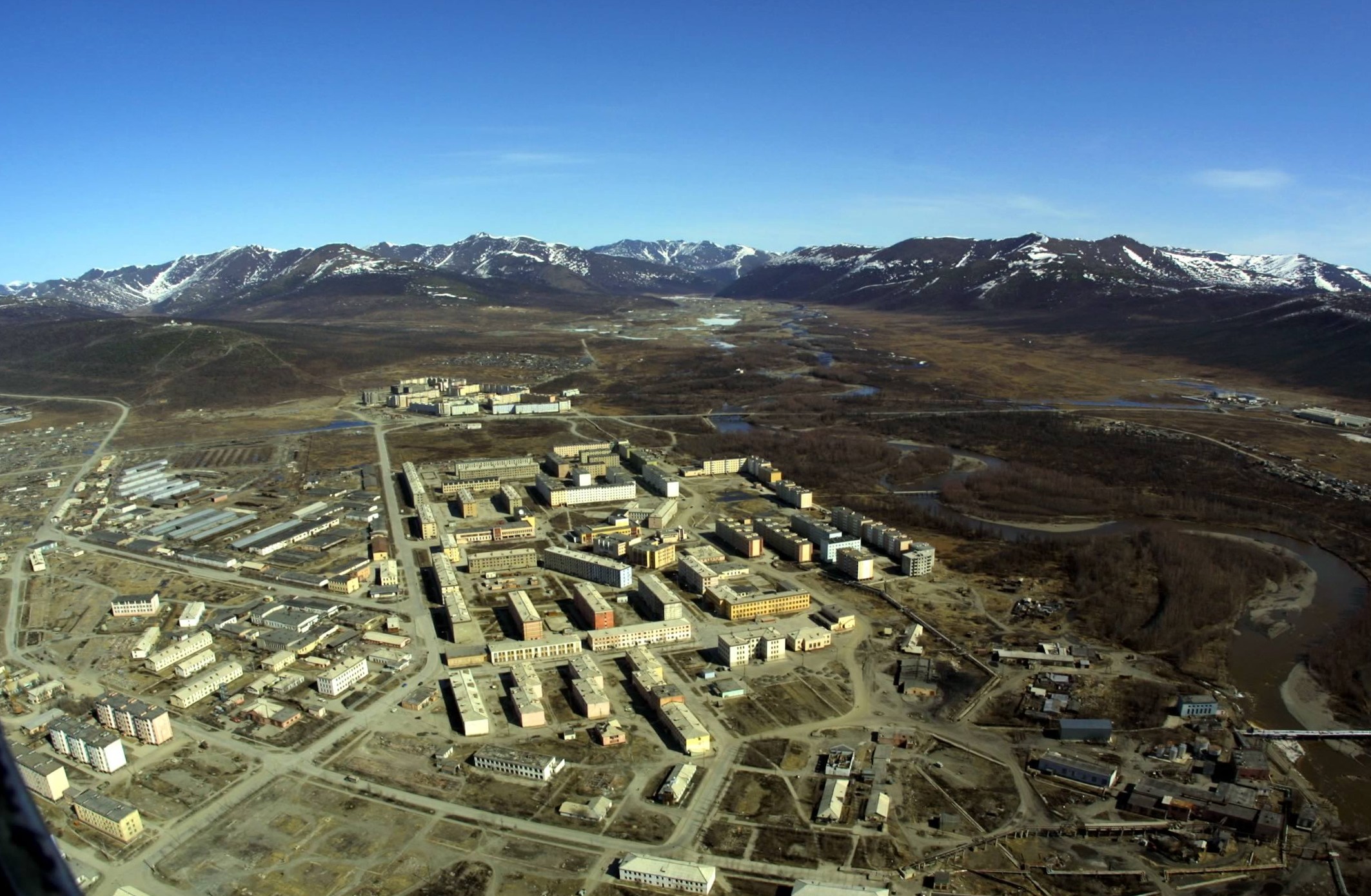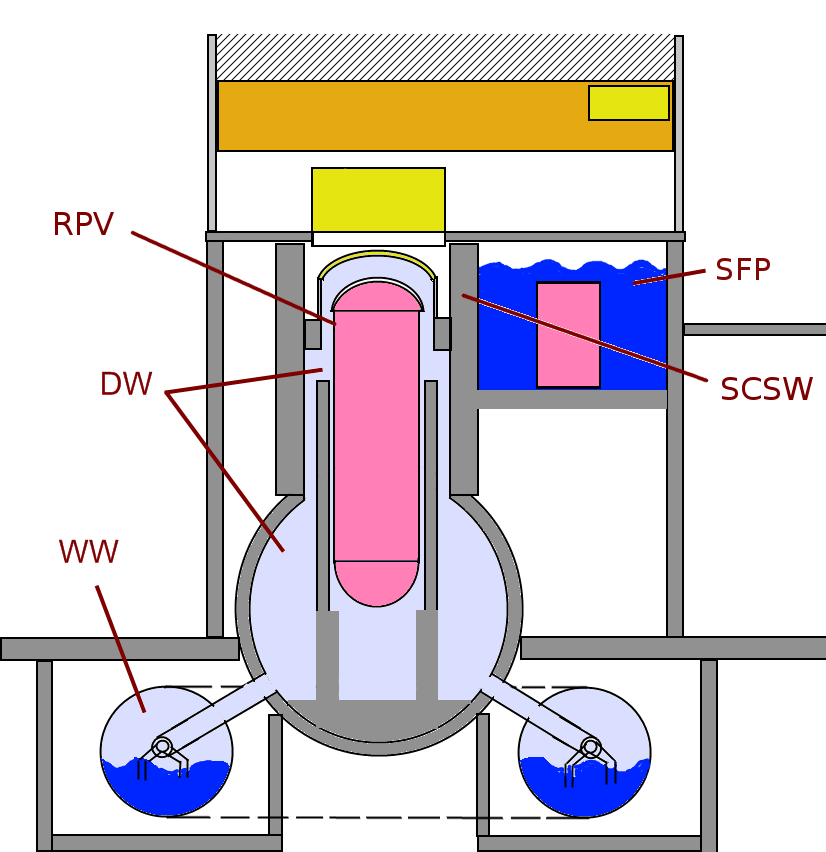|
Bilibino Nuclear Power Plant
The Bilibino Nuclear Power Plant (russian: Билибинская АЭС []) is a Power station, power plant in Bilibino, Chukotka Autonomous Okrug, Russia. The plant is equipped with four EGP-6 reactors. The plant is the smallest and the second northernmost operating nuclear power plant in the world. Plans to begin a shutdown procedure of the plant in 2019 have been announced, and it will be replaced by the floating nuclear power station ''Akademik Lomonosov''. Radiation exposure As of 2012, the EGP-6 reactors at the plant exposed personnel and staff on average to 3.7 mSv/year. This makes up 18.5% of the 20 mSv/year designated radiation workers can receive. The exposure by the Bilibino Nuclear Power Plant is higher than the average for Russian nuclear power plants which sits at 1.26 mSv/year. Improvements since the Fukushima-Daiichi accident Following the 2011 Fukushima nuclear disaster, measures were taken to ensure safety and emergency responses for Russian nuclear power ... [...More Info...] [...Related Items...] OR: [Wikipedia] [Google] [Baidu] |
Bilibino
Bilibino (russian: Били́бино) is a town and the administrative center of Bilibinsky District in Chukotka Autonomous Okrug, Russia. It is located northwest of Anadyr, the administrative center of the autonomous okrug. It is the second largest town in the autonomous okrug after Anadyr. Population: Geography The town of Bilibino was built at the confluence of the Karalveyem and Bolshoy Keperveyem Rivers (Kolyma's basin). Bilibino is on the transition zone between the conifer forest and the tundra of the East Siberian Mountains, southeast of the Pyrkanay Range (Горы Пырканай), southwest of the Rauchuan Range (Раучуанский хребет) and north of the Kyrganay Range and the Chuvan Mountains. History As with much of the rest of Chukotka, the earliest human remains found in the region around Bilibino have been dated to the Early Neolithic, with camp sites having been excavated at Orlovka 2, a site on the banks of the Orlovka River, as well as a ... [...More Info...] [...Related Items...] OR: [Wikipedia] [Google] [Baidu] |
Chukotka Autonomous Okrug
Chukotka (russian: Чуко́тка), officially the Chukotka Autonomous Okrug,, ''Čukotkakèn avtonomnykèn okrug'', is the easternmost federal subjects of Russia, federal subject of Russia. It is an autonomous okrug situated in the Russian Far East, and shares a border with the Sakha, Sakha Republic to the west, Magadan Oblast to the south-west, and Kamchatka Krai to the south. Anadyr (town), Anadyr is the largest types of inhabited localities in Russia, town and the administrative center, capital, and the easternmost settlement to have town status in Russia. Chukotka is primarily populated by ethnic Russians, Chukchi people, Chukchi, and other Indigenous peoples of Siberia, indigenous peoples. It is the only autonomous okrug in Russia that is not included in, or subordinate to, another federal subject, having separated from Magadan Oblast in 1992. It is home to Lake Elgygytgyn, an impact crater lake, and Anyuyskiy, an extinct volcano. The village of Uelen is the easternmos ... [...More Info...] [...Related Items...] OR: [Wikipedia] [Google] [Baidu] |
Energoatom (Russia)
Rosenergoatom (russian: Росэнергоатом) is the Russian nuclear power station operations subsidiary of Atomenergoprom. Ownership and Formation The company was established on 7 September 1992 in Decree of the President of Russia, Presidential decree 1055: "''On operating organization of nuclear power plants in the Russian Federation''". According to the decree on 8 September 2001 all Russian civil nuclear power plants as well as all supporting companies were incorporated into Rosenergoatom. On 19 January 2007 the Russian Parliament adopted the law "On the peculiarities of management and disposition of the property and shares of organizations using nuclear energy and on relevant changes to some legislative acts of the Russian Federation", which created Atomenergoprom - a holding company for all Russian civil nuclear industry; including Rosenergoatom, nuclear fuel producer and supplier TVEL, uranium trader Tekhsnabexport (Tenex) and nuclear facilities constructor Atomstroy ... [...More Info...] [...Related Items...] OR: [Wikipedia] [Google] [Baidu] |
EGP-6
The EGP-6 is a Russian small nuclear reactor design. It is a scaled down version of the RBMK design. As the RBMK, the EGP-6 uses water for cooling and graphite as a neutron moderator. EGP is a Russian acronym but translated into English stand for Power Heterogenous Loop reactor. It is the world's smallest running commercial nuclear reactor, however smaller reactors are currently in development. The EGP-6 reactors are the only reactors to be built on perma-frost. There were only four EGP-6 reactors built which formed the Bilibino Nuclear Power Plant, commissioned in 1974-1977, with a reactor becoming operational each year. The reactors were responsible for supplying Bilibino with utilities such as electricity, heated water, and steam. The population of Bilibino currently sits at around 5,000 and a large majority of its citizens are associated with the plant. The plant design was developed by the Ural Division of Teploelektroproekt together with Izhorskiye Zavody and FEI in Obnin ... [...More Info...] [...Related Items...] OR: [Wikipedia] [Google] [Baidu] |
Power Station
A power station, also referred to as a power plant and sometimes generating station or generating plant, is an industrial facility for the generation of electric power. Power stations are generally connected to an electrical grid. Many power stations contain one or more generators, a rotating machine that converts mechanical power into three-phase electric power. The relative motion between a magnetic field and a conductor creates an electric current. The energy source harnessed to turn the generator varies widely. Most power stations in the world burn fossil fuels such as coal, oil, and natural gas to generate electricity. Low-carbon power sources include nuclear power, and an increasing use of renewables such as solar, wind, geothermal, and hydroelectric. History In early 1871 Belgian inventor Zénobe Gramme invented a generator powerful enough to produce power on a commercial scale for industry. In 1878, a hydroelectric power station was designed and built b ... [...More Info...] [...Related Items...] OR: [Wikipedia] [Google] [Baidu] |
Routledge
Routledge () is a British multinational publisher. It was founded in 1836 by George Routledge, and specialises in providing academic books, journals and online resources in the fields of the humanities, behavioural science, education, law, and social science. The company publishes approximately 1,800 journals and 5,000 new books each year and their backlist encompasses over 70,000 titles. Routledge is claimed to be the largest global academic publisher within humanities and social sciences. In 1998, Routledge became a subdivision and imprint of its former rival, Taylor & Francis Group (T&F), as a result of a £90-million acquisition deal from Cinven, a venture capital group which had purchased it two years previously for £25 million. Following the merger of Informa and T&F in 2004, Routledge became a publishing unit and major imprint within the Informa "academic publishing" division. Routledge is headquartered in the main T&F office in Milton Park, Abingdon, Oxfordshire and ... [...More Info...] [...Related Items...] OR: [Wikipedia] [Google] [Baidu] |
Akademik Lomonosov
''Akademik Lomonosov'' (russian: Академик Ломоносов) is a non-self-propelled power barge that operates as the first Russian floating nuclear power station. The ship was named after Russian Academy of Sciences, academician Mikhail Lomonosov. It is docked in the Pevek harbour, providing heat to the town and supplying electricity to the regional Chaun-Bilibino power system. It is the world’s northernmost nuclear power plant. History Construction started at the Sevmash Submarine-Building Plant in Severodvinsk. The keel of ''Akademik Lomonosov'' was laid on 15 April 2007 and completion was initially planned in May 2010. The celebrations were attended by the first deputy prime minister of Russia, Sergei Ivanov, and by the head of Rosatom, Sergei Kiriyenko. In August 2008, the Russian government approved the transfer of work from Sevmash to the Baltic Shipyard (Baltiysky Zavod) in Saint Petersburg. A second keel-laying was done at the new shipyard in May 2009. ''Akad ... [...More Info...] [...Related Items...] OR: [Wikipedia] [Google] [Baidu] |
Sievert
The sievert (symbol: SvNot be confused with the sverdrup or the svedberg, two non-SI units that sometimes use the same symbol.) is a unit in the International System of Units (SI) intended to represent the stochastic health risk of ionizing radiation, which is defined as the probability of causing radiation-induced cancer and genetic damage. The sievert is important in dosimetry and radiation protection. It is named after Rolf Maximilian Sievert, a Swedish medical physicist renowned for work on radiation dose measurement and research into the biological effects of radiation. The sievert is used for radiation dose quantities such as equivalent dose and effective dose (radiation), effective dose, which represent the risk of external radiation from sources outside the body, and committed dose, which represents the risk of internal irradiation due to inhaled or ingested radioactive substances. According to the International Commission on Radiological Protection (ICRP) one sievert r ... [...More Info...] [...Related Items...] OR: [Wikipedia] [Google] [Baidu] |
Fukushima Nuclear Disaster
The was a nuclear accident in 2011 at the Fukushima Daiichi Nuclear Power Plant in Ōkuma, Fukushima, Japan. The proximate cause of the disaster was the 2011 Tōhoku earthquake and tsunami, which occurred on the afternoon of 11 March 2011 and remains the most powerful earthquake ever recorded in Japan. The earthquake triggered a powerful tsunami, with 13–14-meter-high waves damaging the nuclear power plant's emergency diesel generators, leading to a loss of electric power. The result was the most severe nuclear accident since the Chernobyl disaster in 1986, classified as level seven on the International Nuclear Event Scale (INES) after initially being classified as level five, and thus joining Chernobyl as the only other accident to receive such classification. While the 1957 explosion at the Mayak facility was the second worst by radioactivity released, the INES ranks incidents by impact on population, so Chernobyl (335,000 people evacuated) and Fukushima (154,000 evacuate ... [...More Info...] [...Related Items...] OR: [Wikipedia] [Google] [Baidu] |
RBMK
The RBMK (russian: реактор большой мощности канальный, РБМК; ''reaktor bolshoy moshchnosti kanalnyy'', "high-power channel-type reactor") is a class of graphite-moderated nuclear power reactor designed and built by the Soviet Union. The name refers to its design where, instead of a large steel pressure vessel surrounding the entire core, the core is surrounded by a cylindrical annular steel tank inside a concrete vault and each fuel assembly is enclosed in an individual 8 cm (inner) diameter pipe (called a "technological channel"). The channels also contain the coolant, and are surrounded by graphite. The RBMK is an early Generation II reactor and the oldest commercial reactor design still in wide operation. Certain aspects of the original RBMK reactor design, such as the large positive void coefficient, the 'positive scram effect' of the control rods and instability at low power levels, contributed to the 1986 Chernobyl disaster, in which ... [...More Info...] [...Related Items...] OR: [Wikipedia] [Google] [Baidu] |
VVER
The water-water energetic reactor (WWER), or VVER (from russian: водо-водяной энергетический реактор; transliterates as ; ''water-water power reactor'') is a series of pressurized water reactor designs originally developed in the Soviet Union, and now Russia, by OKB Gidropress. The idea of such a reactor was proposed at the Kurchatov Institute by Savely Moiseevich Feinberg. VVER were originally developed before the 1970s, and have been continually updated. As a result, the name VVER is associated with a wide variety of reactor designs spanning from generation I reactors to modern generation III+ reactor designs. Power output ranges from 70 to 1300 MWe, with designs of up to 1700 MWe in development. The first prototype VVER-210 was built at the Novovoronezh Nuclear Power Plant. VVER power stations have mostly been installed in Russia and the former Soviet Union, but also in China, the Czech Republic, Finland, Germany, Hungary, Slovakia, Bulgaria, Indi ... [...More Info...] [...Related Items...] OR: [Wikipedia] [Google] [Baidu] |




